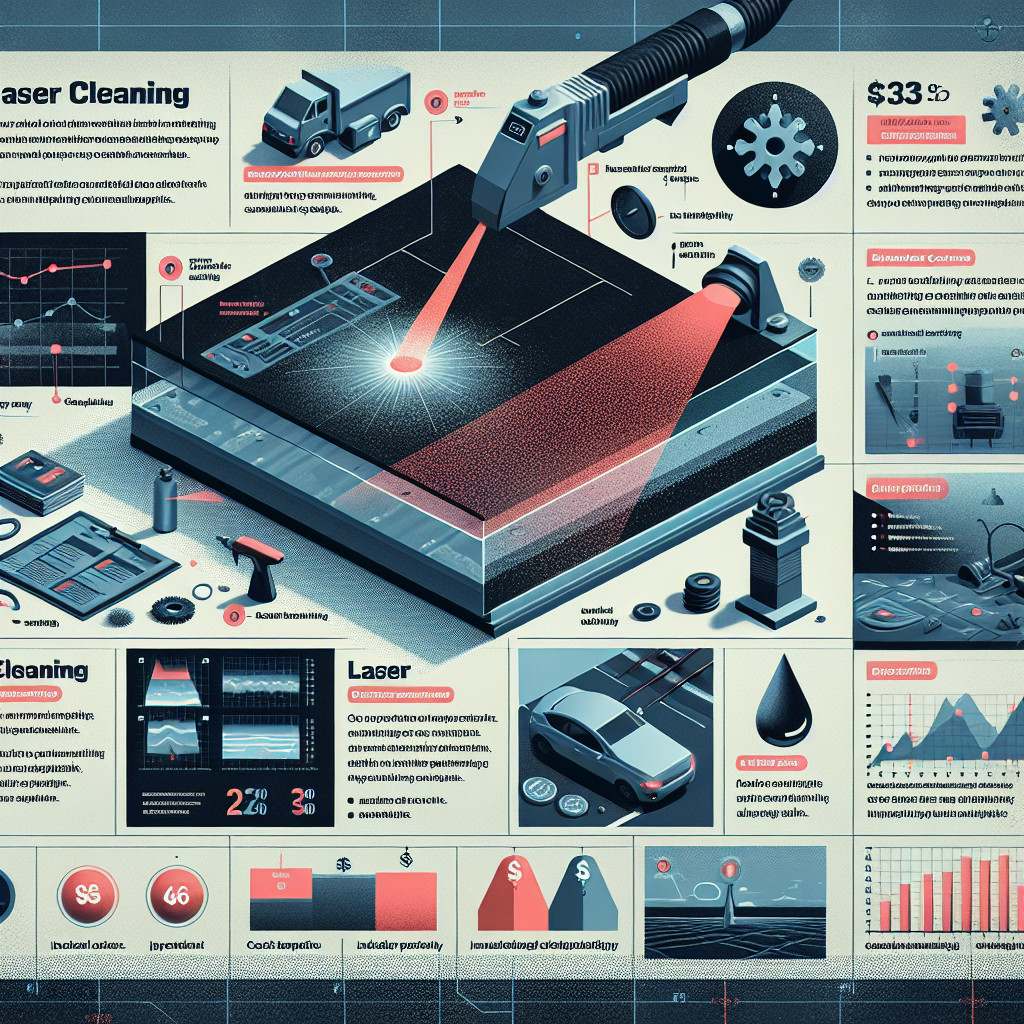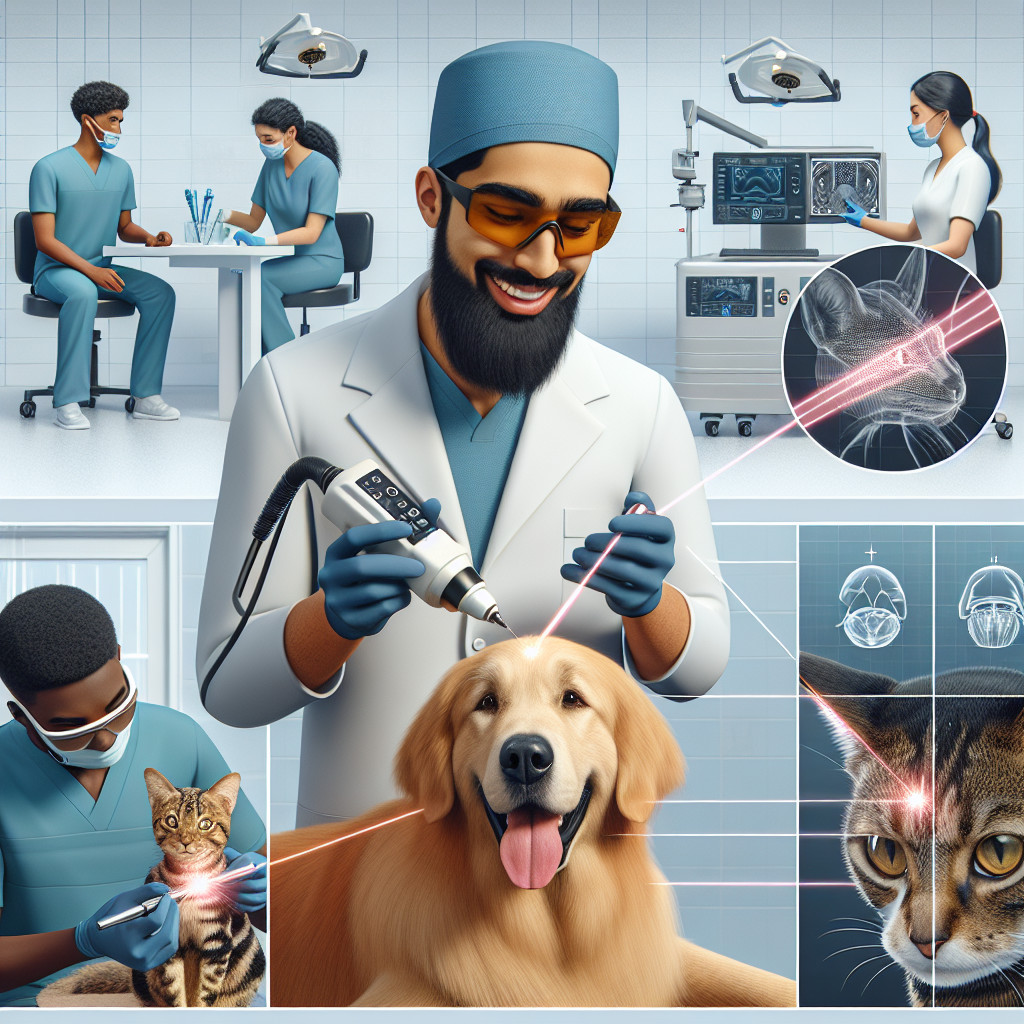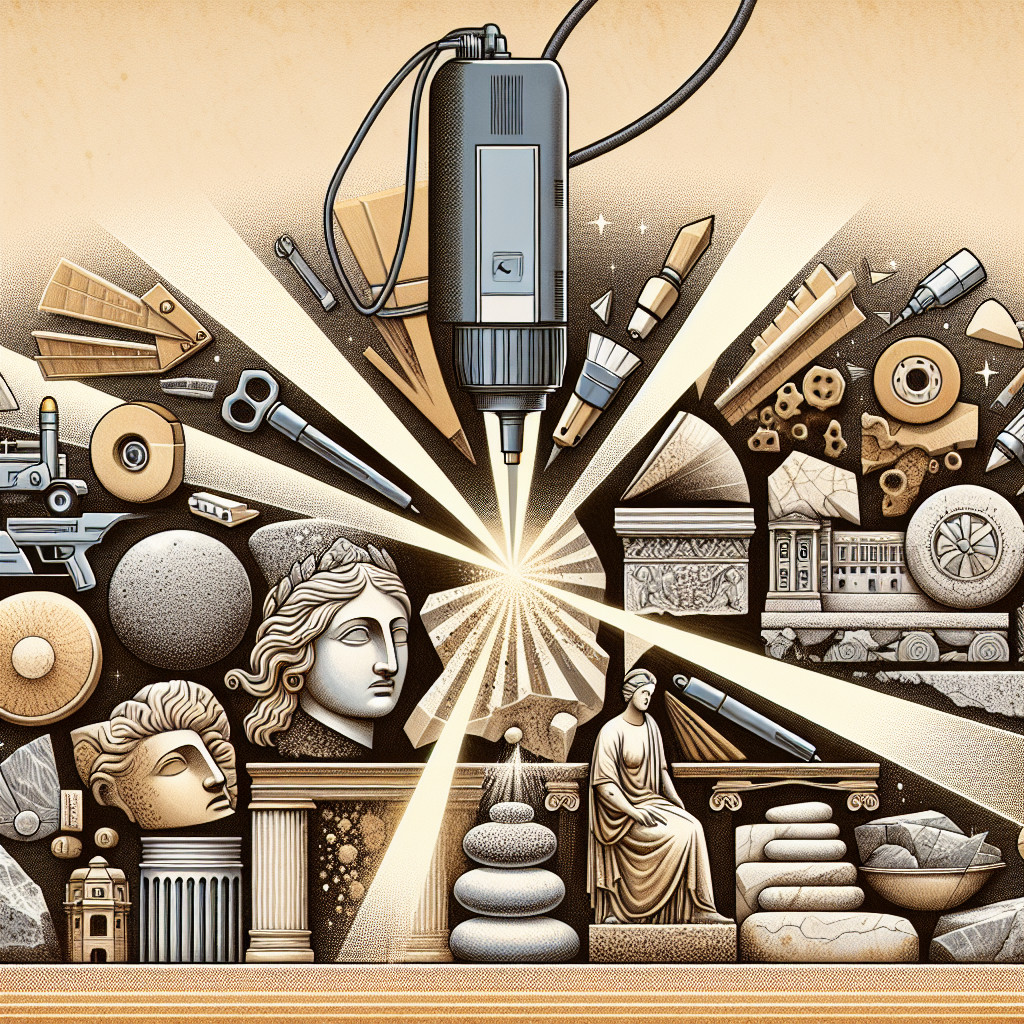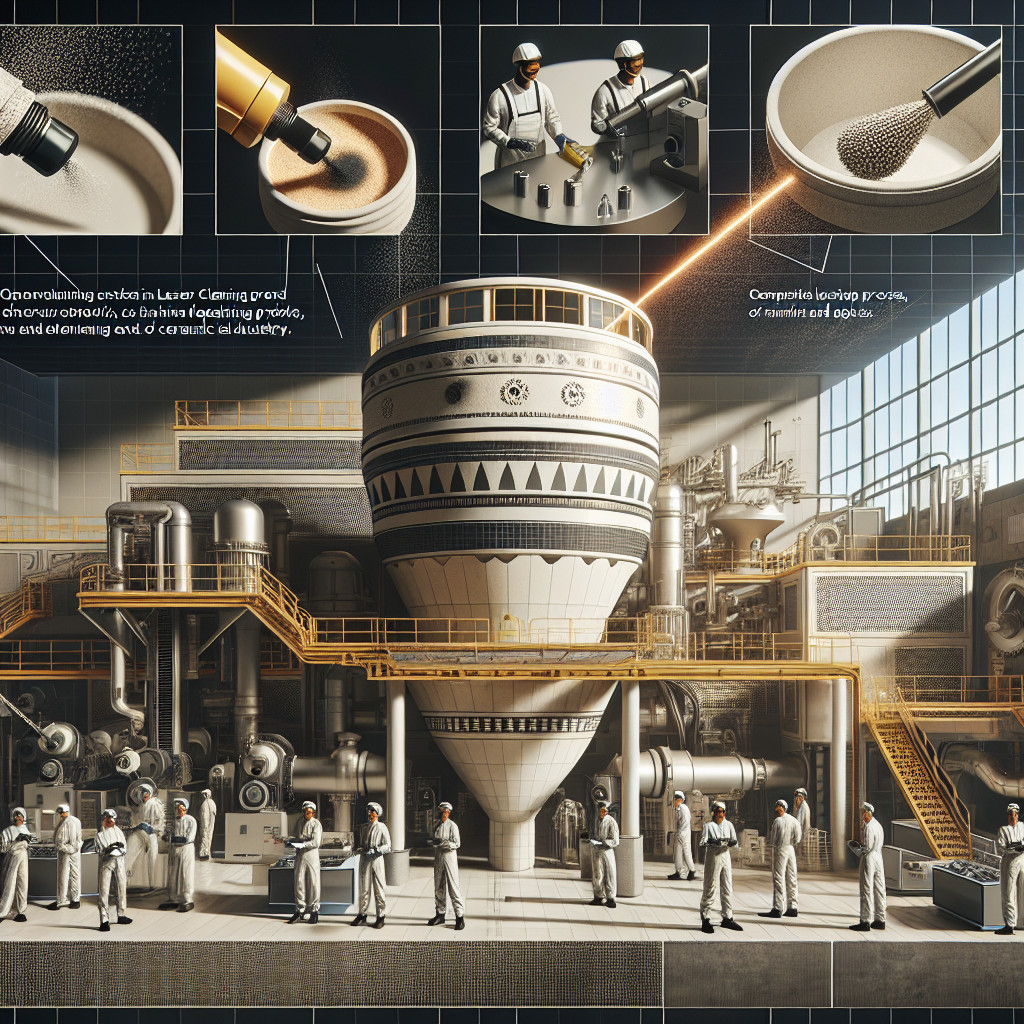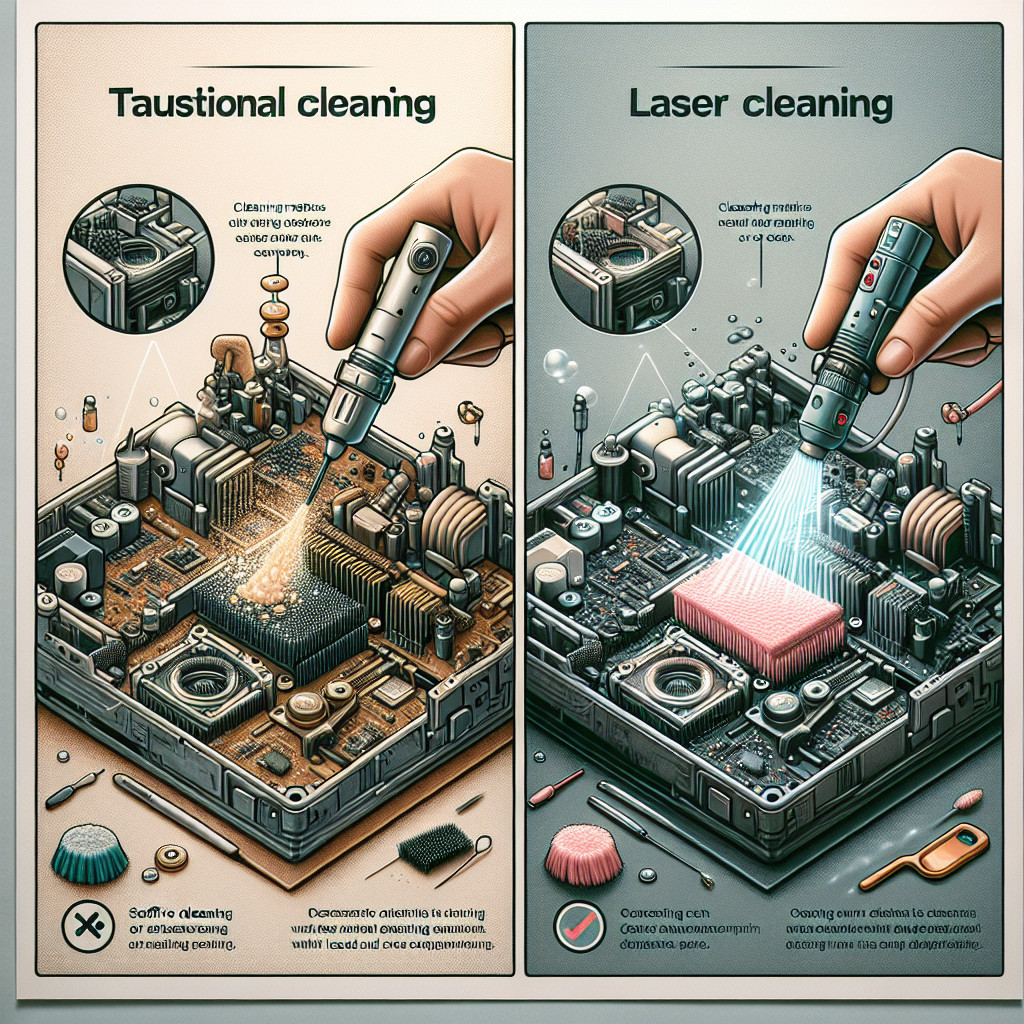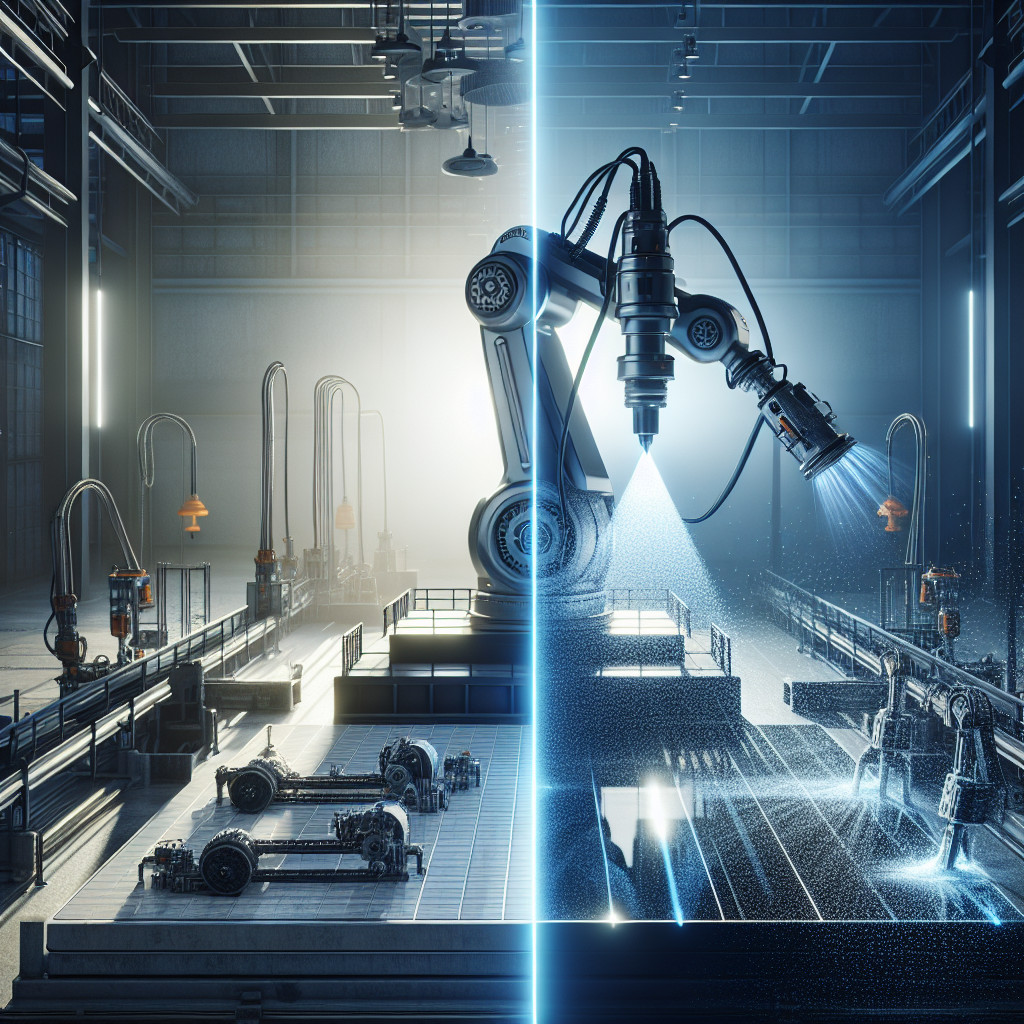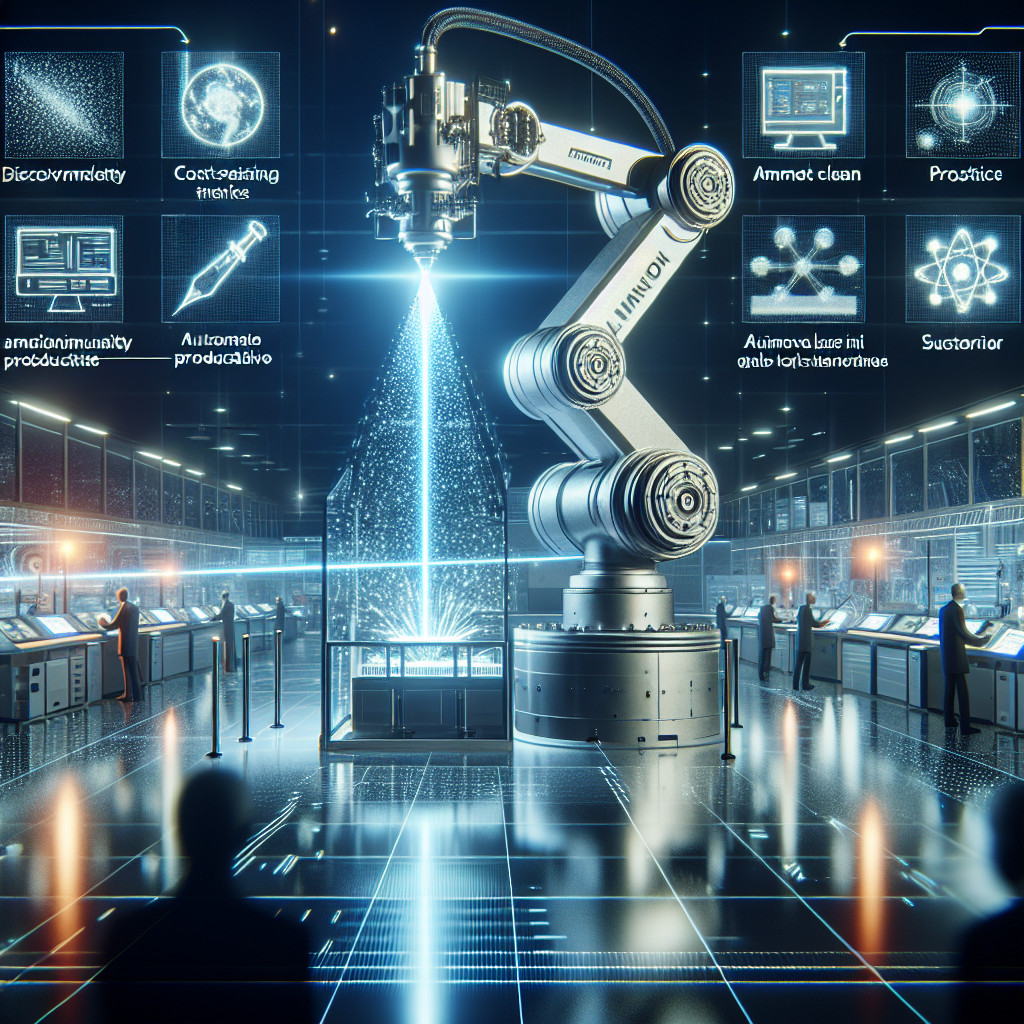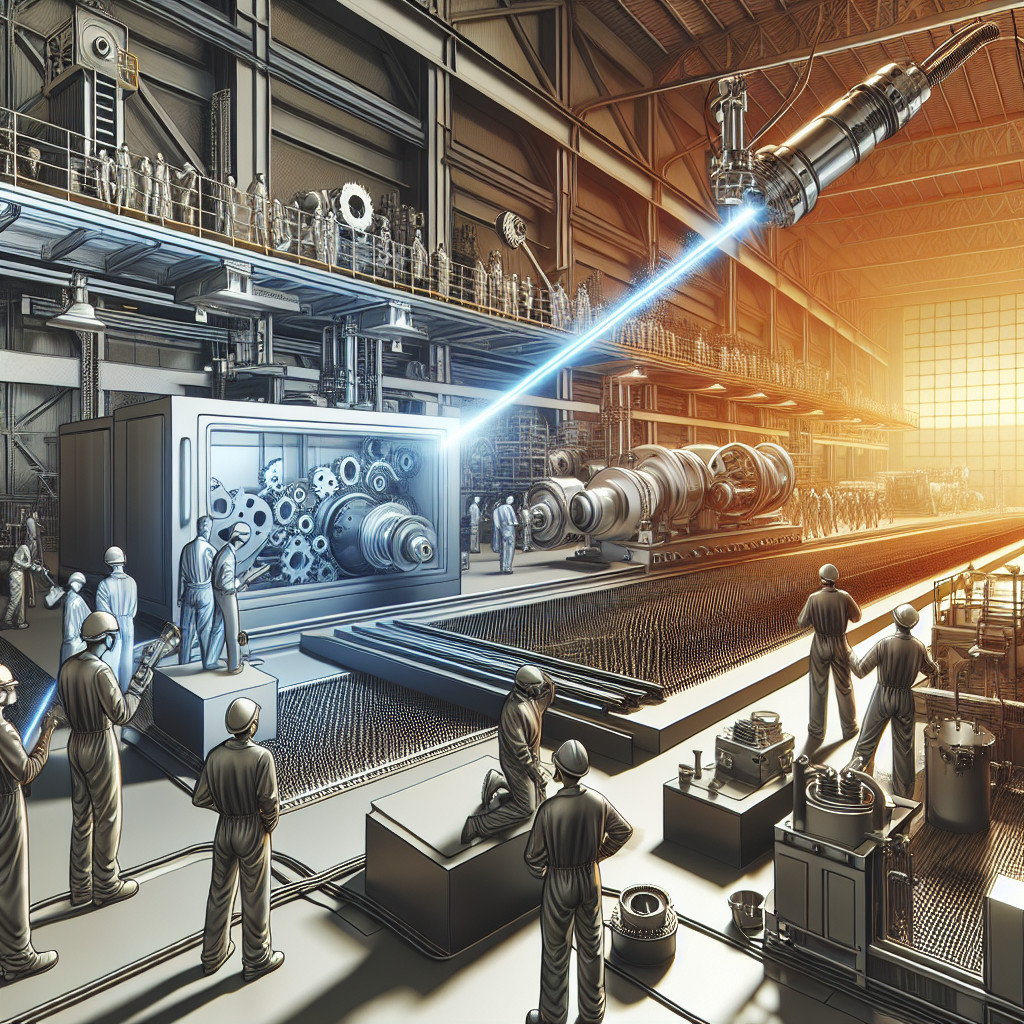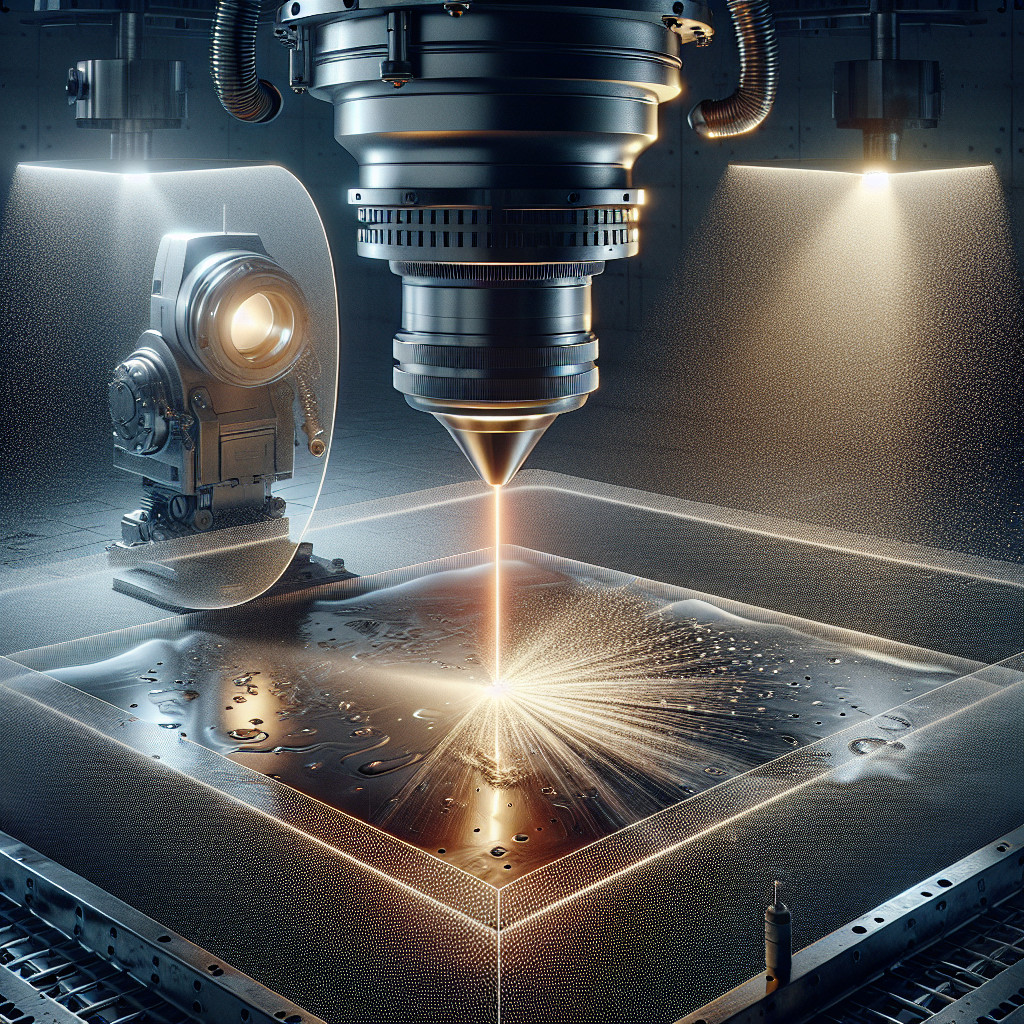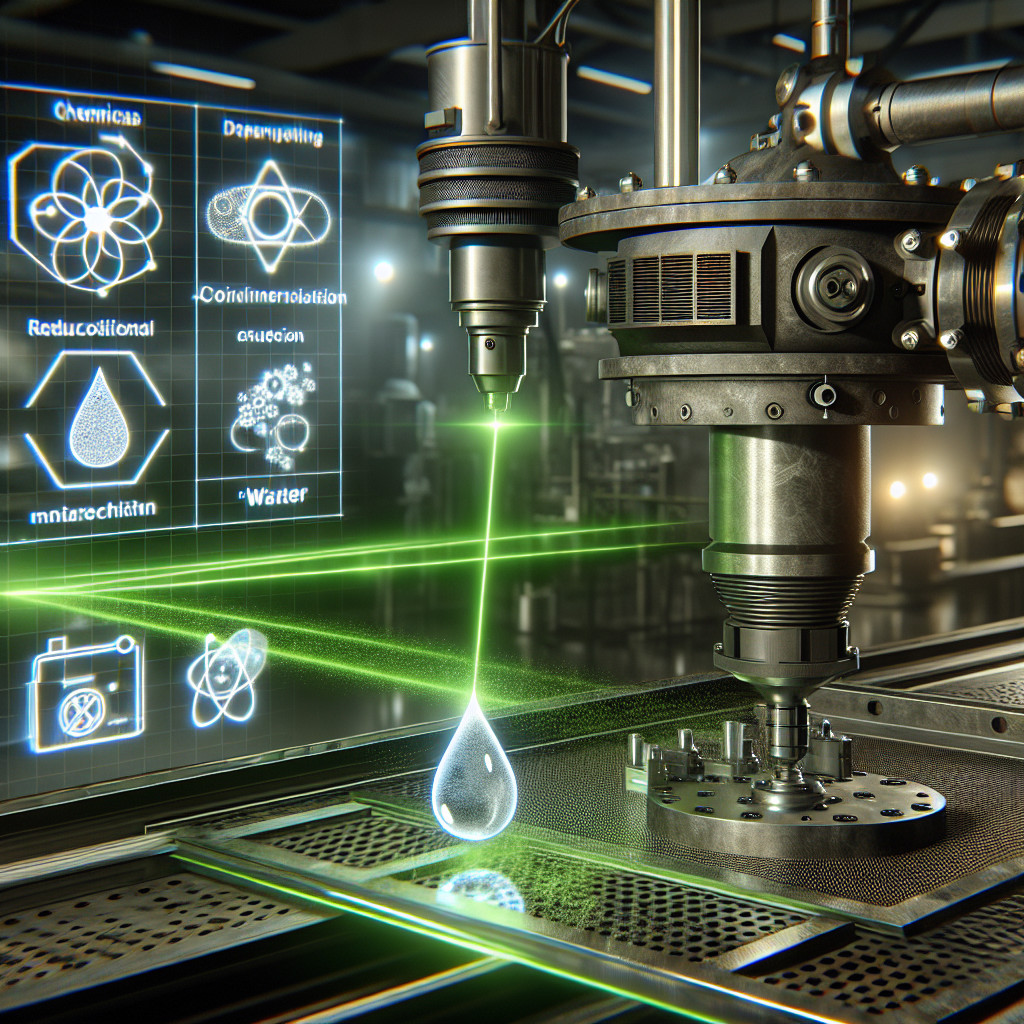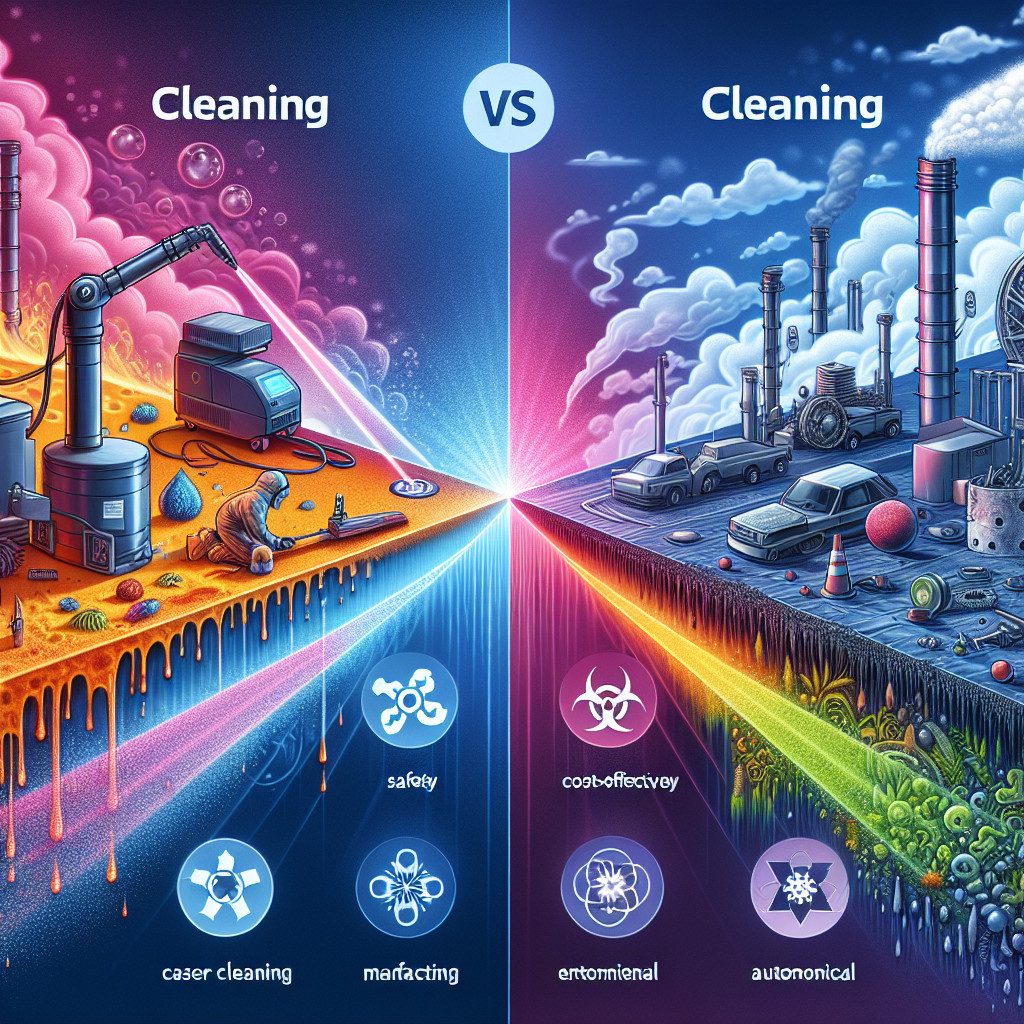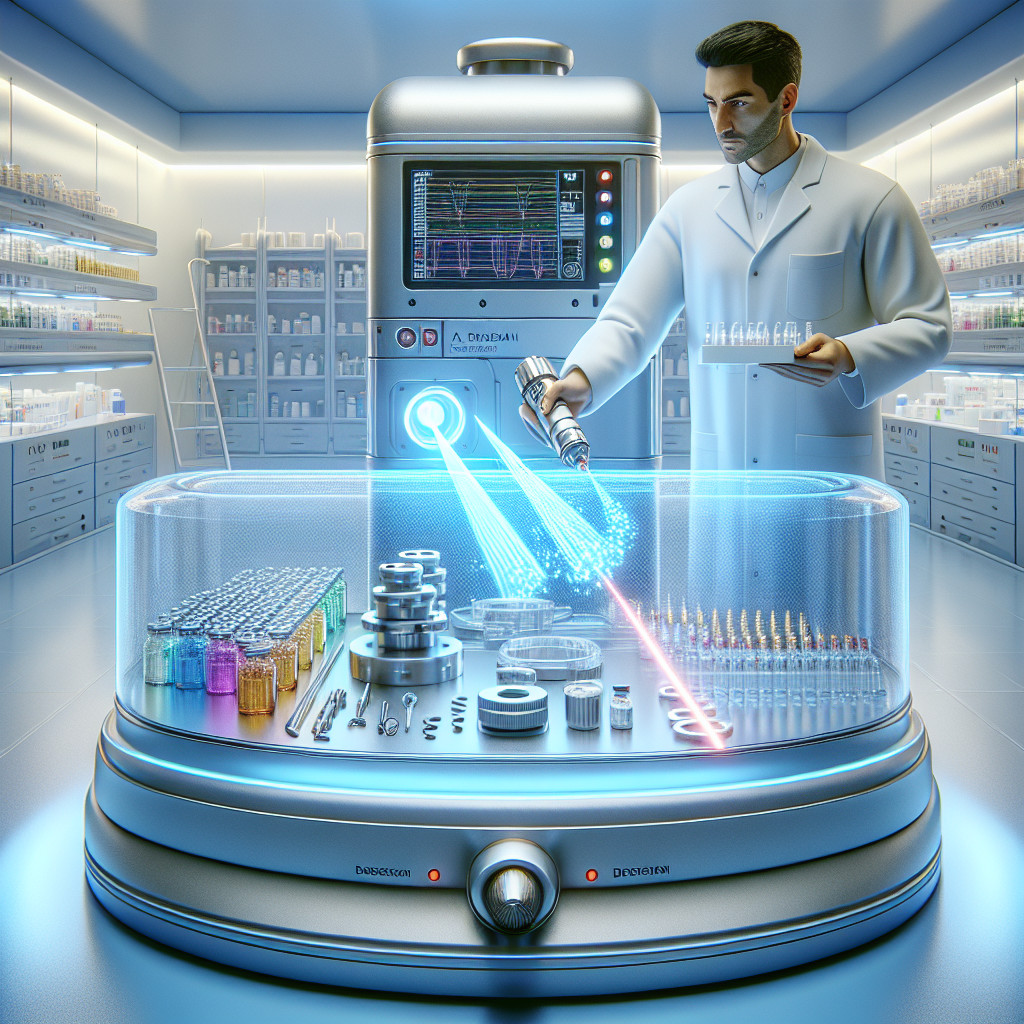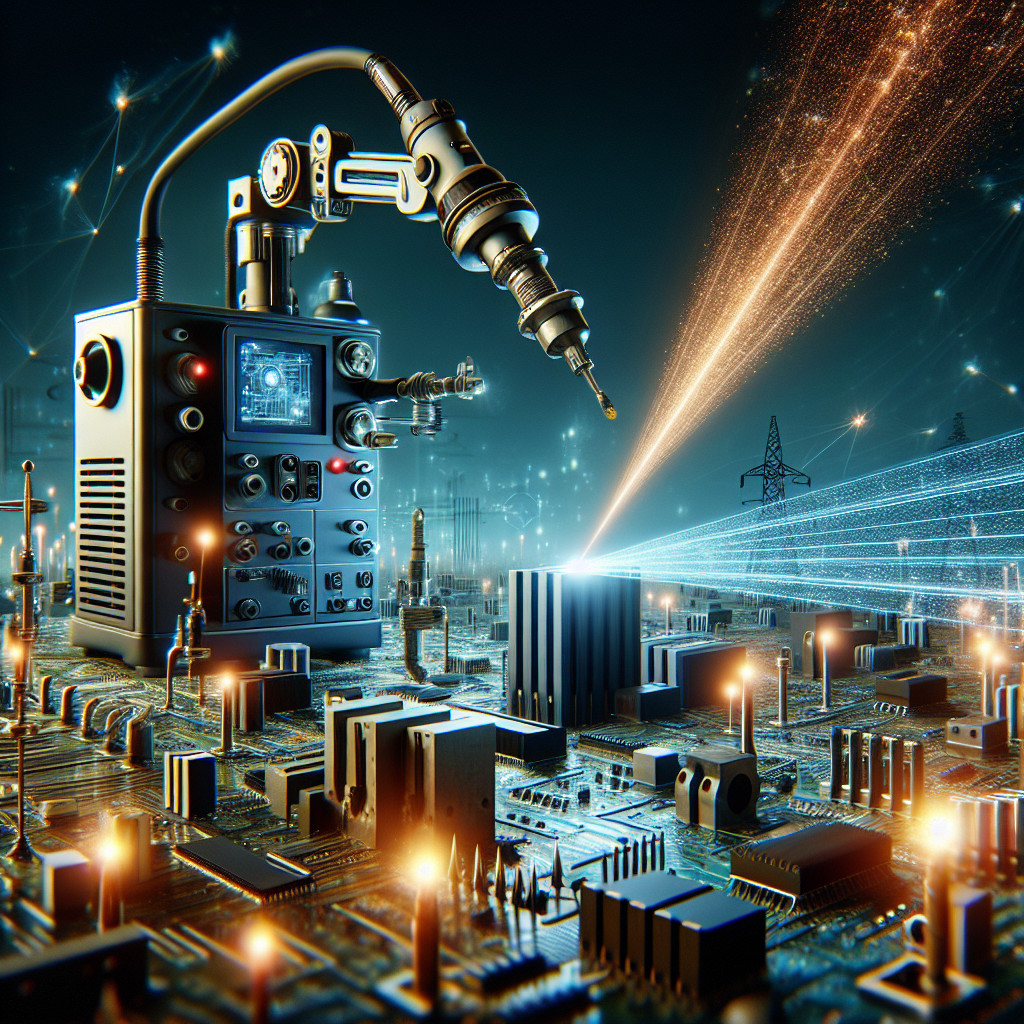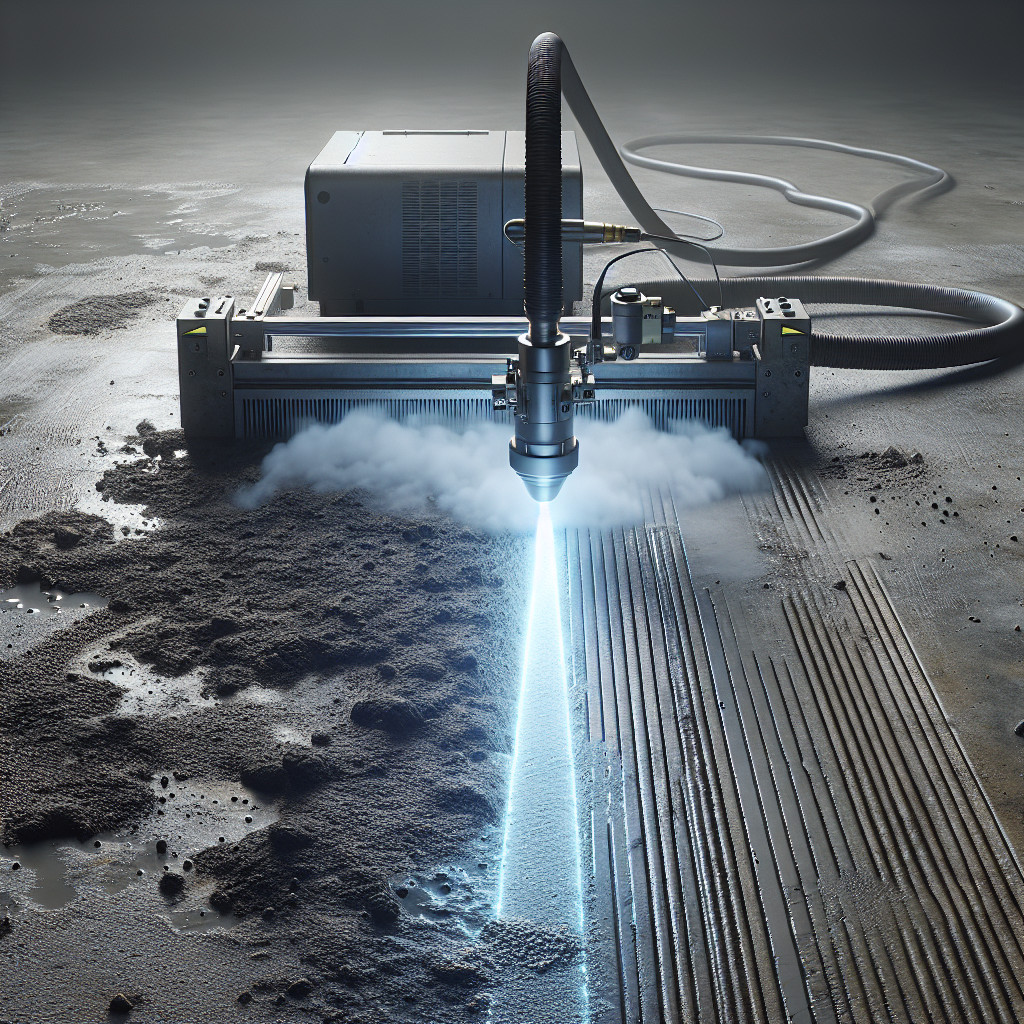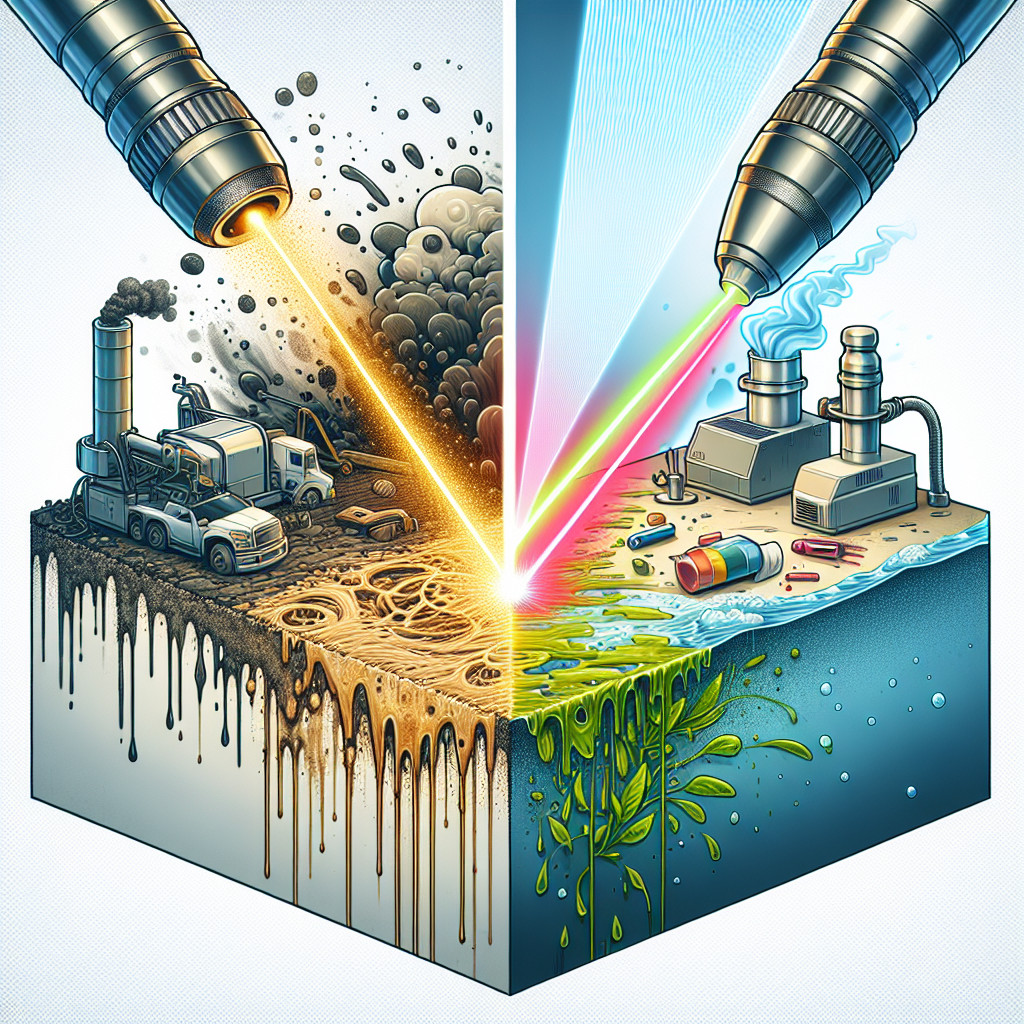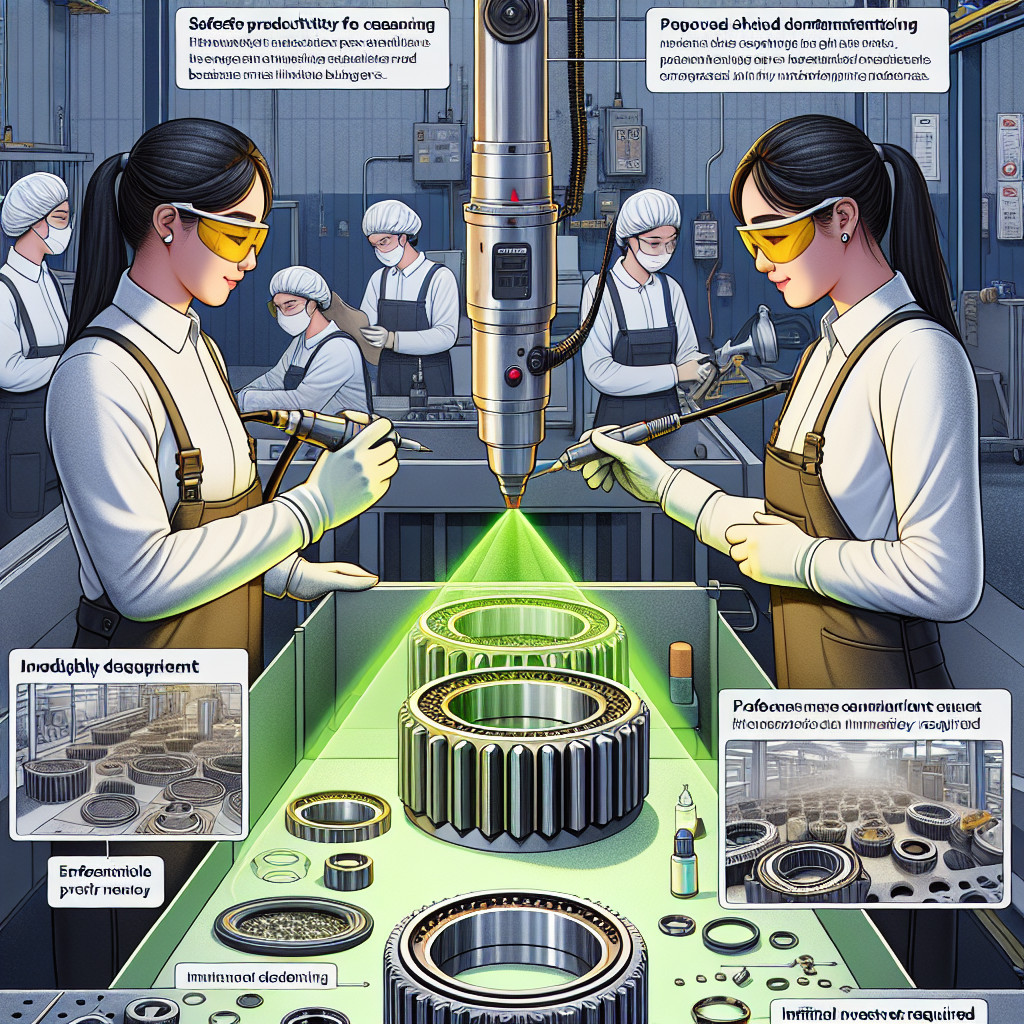- Introduction to laser cleaning technology
- How does laser cleaning remove contaminants from surfaces?
- Safety considerations in laser cleaning operations
- Case studies showcasing successful laser cleaning projects
- Laser cleaning in the aerospace industry
- Laser cleaning in the cultural heritage preservation
- Laser cleaning in the restoration of artworks and artifacts
- Laser cleaning in the manufacturing of precision components
Introduction to laser cleaning technology
Technologia czyszczenia laserowego jest innowacyjnym rozwiązaniem, które znacząco przyczynia się do poprawy efektywności procesów czyszczenia w różnych dziedzinach. Wykorzystuje ona moc lasera do usuwania zanieczyszczeń, warstw powierzchniowych i innych substancji niepożądanych z różnych materiałów. W porównaniu do tradycyjnych metod czyszczenia, takich jak ścieranie, szlifowanie czy użycie chemikaliów, technologia czyszczenia laserowego oferuje wiele korzyści, takich jak precyzja, szybkość i bezpieczeństwo.
Podstawowym elementem technologii czyszczenia laserowego jest laser, czyli urządzenie generujące wiązkę światła o wysokiej intensywności. Laser emituje promieniowanie elektromagnetyczne, które jest skoncentrowane w jednym punkcie, co umożliwia precyzyjne i skuteczne usuwanie zanieczyszczeń. Istnieje wiele rodzajów laserów, które mogą być stosowane w technologii czyszczenia, takich jak lasery CO2, lasery Nd:YAG, lasery diodowe czy lasery impulsowe.
Proces czyszczenia laserowego polega na skierowaniu wiązki lasera na powierzchnię, która ma zostać oczyszczona. Energia lasera powoduje odparowanie lub odłuszczenie zanieczyszczeń, co prowadzi do ich usunięcia. Technologia ta jest nieinwazyjna, ponieważ nie wymaga bezpośredniego kontaktu z powierzchnią, co minimalizuje ryzyko uszkodzenia materiału. Ponadto, laser może być precyzyjnie kontrolowany, co umożliwia czyszczenie trudno dostępnych miejsc i skomplikowanych kształtów.
Zastosowanie technologii czyszczenia laserowego jest szerokie i obejmuje wiele branż. W przemyśle motoryzacyjnym, laser jest wykorzystywany do czyszczenia silników, felg, elementów karoserii i innych części pojazdów. W przemyśle lotniczym, technologia ta jest stosowana do czyszczenia skrzydeł samolotów, silników, kabin i innych powierzchni. W przemyśle spożywczym, laser jest używany do czyszczenia maszyn i urządzeń produkcyjnych, aby zapewnić higienę i bezpieczeństwo żywności. Ponadto, technologia czyszczenia laserowego znajduje zastosowanie w dziedzinach takich jak konserwacja zabytków, czyszczenie pomników, czyszczenie powierzchni malarskich i wiele innych.
Kluczowe słowa: technologia czyszczenia laserowego, laser, zanieczyszczenia, precyzja, szybkość, bezpieczeństwo, lasery CO2, lasery Nd:YAG, lasery diodowe, lasery impulsowe, proces czyszczenia, przemysł motoryzacyjny, przemysł lotniczy, przemysł spożywczy, konserwacja zabytków, czyszczenie powierzchni malarskich.
Frazy kluczowe: wprowadzenie do technologii czyszczenia laserowego, korzyści technologii czyszczenia laserowego, zastosowanie technologii czyszczenia laserowego, jak działa technologia czyszczenia laserowego, rodzaje laserów stosowanych w technologii czyszczenia, precyzyjne czyszczenie laserowe, bezinwazyjne czyszczenie laserowe, czyszczenie laserowe w przemyśle motoryzacyjnym, czyszczenie laserowe w przemyśle lotniczym, czyszczenie laserowe w przemyśle spożywczym, czyszczenie laserowe w konserwacji zabytków.
How does laser cleaning remove contaminants from surfaces?
One of the key advantages of laser cleaning is its versatility. It can be used to remove a wide range of contaminants, including rust, paint, grease, oil, dirt, and even biological substances such as mold and bacteria. The laser beam can be adjusted to different wavelengths and power levels, allowing it to target specific contaminants and adjust the cleaning process accordingly.
Another advantage of laser cleaning is its precision. The laser beam can be controlled with great accuracy, allowing for selective cleaning of specific areas without affecting the surrounding surfaces. This is particularly useful in situations where only certain parts of a surface need to be cleaned, or when cleaning intricate and complex structures.
Laser cleaning also offers a non-abrasive and non-chemical cleaning method. Unlike traditional cleaning methods that may involve the use of harsh chemicals or abrasive materials, laser cleaning does not require any additional substances. This makes it an environmentally friendly option, as it eliminates the need for harmful chemicals and reduces waste generation.
Furthermore, laser cleaning is a fast and efficient process. It can remove contaminants from surfaces in a matter of seconds or minutes, depending on the size and complexity of the area to be cleaned. This makes it a time-saving solution, especially in industrial applications where productivity and efficiency are crucial.
In addition to its cleaning capabilities, laser cleaning also has other benefits. It can be used for surface preparation, such as removing coatings or oxides before applying new finishes or coatings. It can also be used for surface modification, such as creating textures or patterns on surfaces for aesthetic or functional purposes.
In conclusion, laser cleaning is a highly effective and versatile method for removing contaminants from surfaces. Its non-contact nature, precision, and efficiency make it a preferred choice in various industries. By utilizing the power of laser technology, surfaces can be cleaned thoroughly and efficiently, without causing any damage or using harmful chemicals.
Keywords: laser cleaning, contaminants, surfaces, ablation, rust, paint, grease, oil, dirt, biological substances, precision, non-abrasive, non-chemical, environmentally friendly, fast, efficient, surface preparation, surface modification.
Long-tail phrases:
– How does laser cleaning remove rust from surfaces?
– Can laser cleaning remove paint effectively?
– Is laser cleaning safe for delicate surfaces?
– What are the advantages of laser cleaning over traditional cleaning methods?
– How does laser cleaning compare to chemical cleaning?
– Can laser cleaning be used for industrial applications?
– What are the limitations of laser cleaning?
– How does laser cleaning contribute to environmental sustainability?
– Can laser cleaning be used for restoration purposes?
– What are the potential future developments in laser cleaning technology?
Safety considerations in laser cleaning operations
Another important safety consideration is the risk of fire or combustion. Laser cleaning involves the use of high-energy laser beams that can generate intense heat. If the laser beam interacts with flammable materials or surfaces, it can ignite them, leading to a fire hazard. To mitigate this risk, it is essential to ensure that the work area is free from any flammable substances and that appropriate fire suppression systems, such as fire extinguishers or sprinklers, are readily available.
Furthermore, laser cleaning operations can produce hazardous fumes and airborne particles. When the laser beam interacts with contaminants or coatings on the surface being cleaned, it can vaporize them, releasing potentially toxic gases or fine particles into the air. To protect operators from inhalation hazards, it is necessary to implement proper ventilation systems that effectively capture and remove these fumes and particles from the work area.
Additionally, laser cleaning operations may generate noise levels that can exceed recommended exposure limits. The process involves the use of high-powered lasers, which can produce loud noises as they interact with the surface. Prolonged exposure to excessive noise can lead to hearing loss or other auditory problems. Therefore, it is crucial to provide operators with appropriate hearing protection, such as earplugs or earmuffs, to minimize the risk of noise-induced hearing damage.
In terms of electrical safety, laser cleaning systems require a stable and reliable power supply. Any fluctuations or interruptions in the power source can disrupt the laser beam and potentially cause accidents or damage to the equipment. Therefore, it is essential to ensure that the power supply is properly grounded and protected against power surges or voltage fluctuations.
Lastly, operator training and education play a vital role in ensuring the safe execution of laser cleaning operations. Operators should receive comprehensive training on the proper use of laser cleaning equipment, as well as the associated safety protocols and procedures. They should be aware of the potential hazards and risks involved in the process and know how to respond in case of an emergency.
In conclusion, laser cleaning operations offer numerous benefits in terms of efficiency and effectiveness. However, it is crucial to prioritize safety considerations to protect operators and the surrounding environment. Eye protection, fire prevention measures, proper ventilation, noise control, electrical safety, and operator training are all essential aspects that must be addressed to ensure the safe execution of laser cleaning operations.
Keywords: laser cleaning, safety considerations, eye protection, fire hazard, ventilation systems, inhalation hazards, hearing protection, electrical safety, operator training.
Long-tail phrases: laser cleaning safety protocols and procedures, laser cleaning equipment safety measures, laser cleaning fire prevention, laser cleaning ventilation systems, laser cleaning operator training and education.
Case studies showcasing successful laser cleaning projects
Using a high-powered laser, technicians were able to remove the dirt and grime without causing any harm to the statue. The laser’s energy was absorbed by the contaminants, causing them to vaporize and be safely removed. The result was a beautifully restored Statue of Liberty, shining once again as a symbol of freedom and hope.
Another notable case study involves the cleaning of historical buildings in Europe. Many centuries-old structures suffer from the effects of time, weather, and pollution. Traditional cleaning methods often involve harsh chemicals or abrasive techniques that can further damage the delicate surfaces. Laser cleaning has emerged as a game-changer in this field.
In one instance, a medieval cathedral in France was in dire need of restoration. The intricate stone carvings and delicate stained glass windows required a gentle yet effective cleaning method. Laser cleaning proved to be the perfect solution. The laser’s precise beam was able to remove dirt, moss, and other contaminants without causing any harm to the fragile surfaces. The result was a stunning transformation, revealing the true beauty of the cathedral’s architecture.
Industrial equipment and machinery also benefit greatly from laser cleaning. In a case study involving a manufacturing plant, laser cleaning was used to remove rust and corrosion from critical components. Traditional methods would have required disassembly and manual cleaning, resulting in significant downtime and costs. Laser cleaning, on the other hand, allowed for in-situ cleaning, saving time and money.
The laser’s focused beam was able to remove the rust and corrosion without damaging the underlying metal. This not only restored the equipment’s functionality but also extended its lifespan. The success of this case study led to the implementation of laser cleaning in various industries, including automotive, aerospace, and electronics.
In conclusion, laser cleaning has proven to be a highly successful method for restoring and preserving various surfaces. Whether it’s the Statue of Liberty, historical buildings, or industrial equipment, laser cleaning offers a non-contact, precise, and environmentally friendly solution. The case studies mentioned above are just a few examples of the countless successful projects that have utilized laser cleaning technology.
Keywords: laser cleaning, successful projects, restoration, preservation, non-contact, environmentally friendly, dirt removal, rust removal, contaminants, historical artifacts, industrial equipment, delicate artworks, Statue of Liberty, gentle cleaning, precision, high-powered laser, vaporization, historical buildings, Europe, medieval cathedral, stone carvings, stained glass windows, industrial machinery, rust and corrosion removal, manufacturing plant, in-situ cleaning, extended lifespan, automotive industry, aerospace industry, electronics industry.
Long-tail phrases: laser cleaning technology for historical artifact restoration, non-contact cleaning method for delicate artworks, successful laser cleaning projects in industrial equipment maintenance, laser cleaning benefits for rust and corrosion removal, laser cleaning applications in the automotive, aerospace, and electronics industries.
Laser cleaning in the aerospace industry
Laser cleaning, on the other hand, provides a non-contact, non-abrasive, and environmentally friendly solution to these challenges. It utilizes the power of laser beams to remove contaminants from surfaces without causing any damage. The laser energy is absorbed by the contaminants, causing them to vaporize or disintegrate, leaving behind a clean surface.
One of the key advantages of laser cleaning is its precision. The laser beam can be precisely controlled to target specific areas or components, ensuring thorough cleaning without affecting surrounding materials. This level of precision is particularly crucial in the aerospace industry, where intricate parts and sensitive surfaces are common.
Moreover, laser cleaning is a highly efficient process. It eliminates the need for manual labor, reducing the time and cost associated with traditional cleaning methods. It also eliminates the use of hazardous chemicals, making it a safer and more sustainable option. Additionally, laser cleaning can be automated, allowing for continuous and consistent cleaning operations, further enhancing efficiency.
The aerospace industry encompasses a wide range of components, from engine parts to aircraft structures. Laser cleaning can be applied to various materials, including metals, composites, and ceramics, making it a versatile solution for different aerospace applications. It can effectively remove contaminants such as rust, paint, adhesives, and even biological substances, ensuring the cleanliness and integrity of critical aerospace components.
Furthermore, laser cleaning offers long-term benefits for the aerospace industry. By maintaining the cleanliness of components, it helps prevent premature wear and tear, reducing the need for frequent repairs or replacements. This, in turn, leads to cost savings and increased operational efficiency for aerospace companies.
In conclusion, laser cleaning has revolutionized the way the aerospace industry approaches cleanliness and maintenance. Its precision, efficiency, and versatility make it an ideal solution for ensuring the integrity and reliability of critical aerospace components. By eliminating the limitations of traditional cleaning methods, laser cleaning has become an indispensable tool in the aerospace industry.
Keywords: laser cleaning, aerospace industry, precision, efficiency, contaminants, surfaces, non-abrasive, environmentally friendly, automation, materials, maintenance, reliability.
Long-tail phrases: laser cleaning in aerospace industry benefits, precision of laser cleaning in aerospace, efficiency of laser cleaning in aerospace, laser cleaning for aerospace components, non-abrasive cleaning in aerospace, environmentally friendly cleaning in aerospace, automation in laser cleaning for aerospace, materials suitable for laser cleaning in aerospace, maintenance advantages of laser cleaning in aerospace, reliability of laser cleaning in aerospace.
Laser cleaning in the cultural heritage preservation
Laser cleaning has found extensive applications in the restoration and preservation of various cultural artifacts, including paintings, sculptures, manuscripts, and historical buildings. In the field of paintings, laser cleaning can effectively remove layers of dirt, varnish, and overpainting without affecting the original paint layers. This technique allows conservators to reveal the true colors and details of the artwork, enhancing its aesthetic value. Similarly, laser cleaning can be used to remove encrustations, corrosion, and pollutants from sculptures, ensuring their longevity and visual appeal. In the case of manuscripts, laser cleaning can gently remove stains, mold, and other contaminants, thereby preserving the delicate pages and improving legibility. Laser cleaning can also be employed in the restoration of historical buildings, removing pollutants, graffiti, and biological growth without causing any harm to the original structure.
Benefits of Laser Cleaning:
Laser cleaning offers several advantages over traditional cleaning methods. Firstly, it is a non-contact technique, which means that there is no physical contact between the laser and the artifact’s surface. This eliminates the risk of mechanical damage that can occur with abrasive cleaning methods. Secondly, laser cleaning is highly precise and selective, allowing conservators to target specific areas or substances without affecting the surrounding material. This level of control is particularly beneficial when dealing with intricate or fragile artifacts. Additionally, laser cleaning is a dry process, minimizing the use of solvents or chemicals that can potentially harm the artifact or the environment. Furthermore, laser cleaning is a relatively quick method, reducing the overall restoration time and allowing for more efficient preservation efforts.
Challenges and Considerations:
While laser cleaning offers numerous advantages, there are also certain challenges and considerations that conservators must take into account. One of the primary challenges is the selection of the appropriate laser parameters for each specific artifact. Different materials and surface conditions require different laser settings to ensure effective cleaning without causing damage. Therefore, conservators must have a thorough understanding of laser technology and its interaction with various materials. Another consideration is the potential for color change or fading of pigments during the cleaning process. This risk can be mitigated by conducting extensive testing and monitoring during the cleaning procedure. Additionally, laser cleaning can generate heat, which may pose a risk to sensitive materials. Proper cooling systems and monitoring techniques must be implemented to prevent any thermal damage.
Keywords: laser cleaning, cultural heritage preservation, restoration, artifacts, paintings, sculptures, manuscripts, historical buildings, non-contact, non-abrasive, dirt, grime, unwanted substances, applications, benefits, challenges, precision, selective, dry process, solvents, chemicals, laser parameters, color change, fading, pigments, heat, cooling systems, monitoring.
Long-tail phrases:
– Laser cleaning in cultural heritage preservation: a non-contact, non-abrasive method.
– Applications of laser cleaning in restoring paintings, sculptures, manuscripts, and historical buildings.
– Benefits of laser cleaning: precision, selectivity, dry process, reduced restoration time.
– Challenges and considerations in laser cleaning: appropriate laser parameters, color change, heat generation.
Laser cleaning in the restoration of artworks and artifacts
The process of laser cleaning involves the use of a specific type of laser, such as a pulsed or Q-switched laser, which emits short bursts of high-energy light. The laser beam is directed onto the surface of the artwork or artifact, where it interacts with the dirt or grime. The energy from the laser causes the contaminants to vaporize or break down into smaller particles, which can then be easily removed.
One of the key advantages of laser cleaning is its precision. The intensity and duration of the laser beam can be adjusted to suit the specific needs of the artwork or artifact. This allows conservators to selectively remove dirt or unwanted substances without affecting the original surface or paint layers. Laser cleaning can even be used to remove overpaint or varnish layers, revealing the original colors and details of the artwork.
Another benefit of laser cleaning is its ability to remove stubborn stains or discoloration. Traditional cleaning methods often struggle to remove deep-seated stains or discoloration, especially on porous materials. Laser cleaning, however, can penetrate deep into the surface and effectively remove even the most stubborn contaminants. This makes it particularly useful for restoring artworks or artifacts that have been damaged by fire, smoke, or water.
In addition to its cleaning capabilities, laser technology can also be used for other restoration purposes. For example, lasers can be used to selectively remove unwanted retouching or inpainting, allowing conservators to reveal the original brushstrokes or details. Laser technology can also be used to repair or consolidate fragile or deteriorated materials, such as ceramics or textiles. By carefully controlling the energy and intensity of the laser beam, conservators can bond or strengthen fragile areas without causing any further damage.
Despite its numerous advantages, laser cleaning does have some limitations. For example, certain materials, such as glass or metals, may be sensitive to the heat generated by the laser beam. In such cases, alternative cleaning methods may need to be employed. Additionally, laser cleaning can be a time-consuming process, especially for large or complex artworks or artifacts. However, the results are often well worth the effort, as laser cleaning can achieve remarkable transformations and reveal hidden details that were previously obscured.
In conclusion, laser cleaning has revolutionized the field of art restoration and conservation. Its non-invasive nature, precision, and ability to remove stubborn stains make it an invaluable tool for conservators and restorers. By harnessing the power of laser technology, artworks and artifacts can be restored to their original beauty and preserved for future generations to enjoy.
Keywords: laser cleaning, restoration, artworks, artifacts, conservation, preservation, non-invasive, delicate surfaces, dirt, grime, damage, innovative technique, conservators, restorers, glory, advantages, traditional cleaning methods, harsh chemicals, abrasive materials, fragile materials, paintings, sculptures, ceramics, textiles, pulsed laser, Q-switched laser, high-energy light, vaporize, break down, precision, paint layers, overpaint, varnish layers, colors, details, stains, discoloration, porous materials, fire, smoke, water, retouching, inpainting, brushstrokes, repair, consolidate, deteriorated materials, ceramics, textiles, limitations, glass, metals, heat, alternative cleaning methods, time-consuming, transformations, hidden details, obscured, art restoration, conservation.
Long-tail phrases: laser cleaning in art restoration, laser cleaning in artifact preservation, non-invasive cleaning techniques, laser cleaning for delicate surfaces, laser cleaning for paintings, laser cleaning for sculptures, laser cleaning for ceramics, laser cleaning for textiles, laser cleaning for removing stains, laser cleaning for removing discoloration, laser cleaning for fire-damaged artworks, laser cleaning for smoke-damaged artifacts, laser cleaning for water-damaged materials, laser cleaning for retouching removal, laser cleaning for inpainting removal, laser cleaning for revealing brushstrokes, laser cleaning for repairing ceramics, laser cleaning for consolidating textiles, limitations of laser cleaning, alternative cleaning methods for glass, alternative cleaning methods for metals, time-consuming laser cleaning process, transformations achieved through laser cleaning, revealing hidden details through laser cleaning, obscured details in artworks and artifacts, laser cleaning in art restoration and conservation.
Laser cleaning in the manufacturing of precision components
Traditionally, manufacturers have relied on methods like abrasive blasting, chemical cleaning, and manual scrubbing to clean precision components. While these methods can be effective to some extent, they often have limitations and drawbacks. Abrasive blasting, for example, can cause surface damage and generate hazardous waste. Chemical cleaning may leave residues or require additional rinsing steps. Manual scrubbing is time-consuming and labor-intensive.
Laser cleaning, on the other hand, offers a non-contact, precise, and environmentally friendly solution to these challenges. It utilizes high-intensity laser beams to remove contaminants from the surface of precision components without causing any damage. The laser energy is absorbed by the contaminants, causing them to vaporize or disintegrate, leaving behind a clean surface.
One of the key advantages of laser cleaning is its ability to selectively remove specific contaminants while leaving the underlying material unaffected. This is particularly important when dealing with delicate or sensitive components. Laser cleaning can target and remove contaminants with micron-level precision, ensuring that the components remain intact and undamaged.
Furthermore, laser cleaning is a dry process that does not require the use of any chemicals or abrasive materials. This eliminates the need for hazardous solvents or abrasive media, reducing the risk of worker exposure to harmful substances and minimizing waste generation. Laser cleaning is also a highly efficient method, as it can be automated and integrated into existing manufacturing processes, saving time and labor costs.
The applications of laser cleaning in precision component manufacturing are vast. It can be used to clean surfaces before bonding or welding operations, ensuring optimal adhesion and joint strength. Laser cleaning can also be employed to remove coatings or residues from molds, dies, and tooling, prolonging their lifespan and maintaining dimensional accuracy. Additionally, laser cleaning can be utilized for surface preparation prior to painting, plating, or coating processes, enhancing the quality and durability of the finished product.
In conclusion, laser cleaning has emerged as a game-changer in the manufacturing of precision components. Its ability to provide precise, non-contact, and environmentally friendly cleaning solutions has revolutionized the industry. The advantages of laser cleaning over traditional methods are numerous, including increased efficiency, improved quality, and reduced environmental impact. As industries continue to strive for higher levels of precision and cleanliness, laser cleaning will undoubtedly play a crucial role in meeting these demands.
Keywords: laser cleaning, precision components, manufacturing, surface preparation, maintenance, efficiency, quality, environmental impact, contaminants, abrasive blasting, chemical cleaning, manual scrubbing, non-contact, selective removal, delicate components, dry process, automation, integration, bonding, welding, coatings, molds, dies, tooling, dimensional accuracy, painting, plating, coating, game-changer.
Long-tail phrases: laser cleaning in precision component manufacturing, advantages of laser cleaning over traditional methods, applications of laser cleaning, non-contact cleaning solution, environmentally friendly cleaning, selective removal of contaminants, dry and chemical-free cleaning process, automation and integration of laser cleaning, surface preparation for bonding and welding, removal of coatings and residues, enhancing quality and durability, meeting demands for precision and cleanliness.
- Laser cleaning and long-term cost savings – cost analysis - February 29, 2024
- Laser cleaning and reducing emissions of harmful substances - February 28, 2024
- Can laser cleaning be used in veterinary medicine? - February 28, 2024



